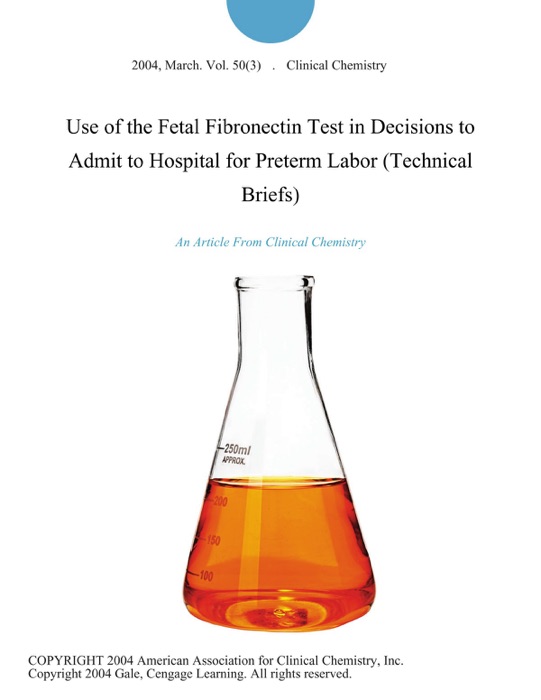[Download] "Use of the Fetal Fibronectin Test in Decisions to Admit to Hospital for Preterm Labor (Technical Briefs)" by Clinical Chemistry * eBook PDF Kindle ePub Free

eBook details
- Title: Use of the Fetal Fibronectin Test in Decisions to Admit to Hospital for Preterm Labor (Technical Briefs)
- Author : Clinical Chemistry
- Release Date : January 01, 2004
- Genre: Chemistry,Books,Science & Nature,
- Pages : * pages
- Size : 179 KB
Description
Early delivery attributable to preterm labor remains a significant cause of neonatal morbidity and mortality. Obstetricians often face the challenge of deciding whether to admit a woman to the hospital when she presents with possible preterm labor. In recent years, there has been much emphasis on developing laboratory tests that can help clinicians predict the likelihood of "true" preterm labor. The fetal fibronectin (fFN) assay has attracted interest because of its reported high negative predictive value for preterm labor. We implemented the Rapid Fetal Fibronectin lateral immunodiffusion assay on the [Tli.sub.IQ][TM] System (Adeza Biomedical) in the Brigham and Women's Hospital clinical laboratory in October 2001. To determine how the test results would influence clinical decision-making in our hospital, we created a survey to be completed by clinicians at the time of test requisition. In this report, we compare the survey results, which reflect the pretest intention of the ordering clinicians, to the clinical course of tested patients. fFN, a uniquely glycosylated form of the abundant plasma protein fibronectin, is found in the placenta and amniotic fluid, primarily at the uteroplacental junction, and is released into the upper vagina near the onset of labor (1). Although the presence of fFN in vaginal fluids does not necessarily indicate the onset of labor (positive predictive value, 15-25%), its absence rules out labor within 7 days with a very high negative predictive value (97-99.5%) (1-3). Therefore, a negative result indicates a low likelihood of delivery, but a positive test should not be interpreted as an indication of labor or a reason for admission.